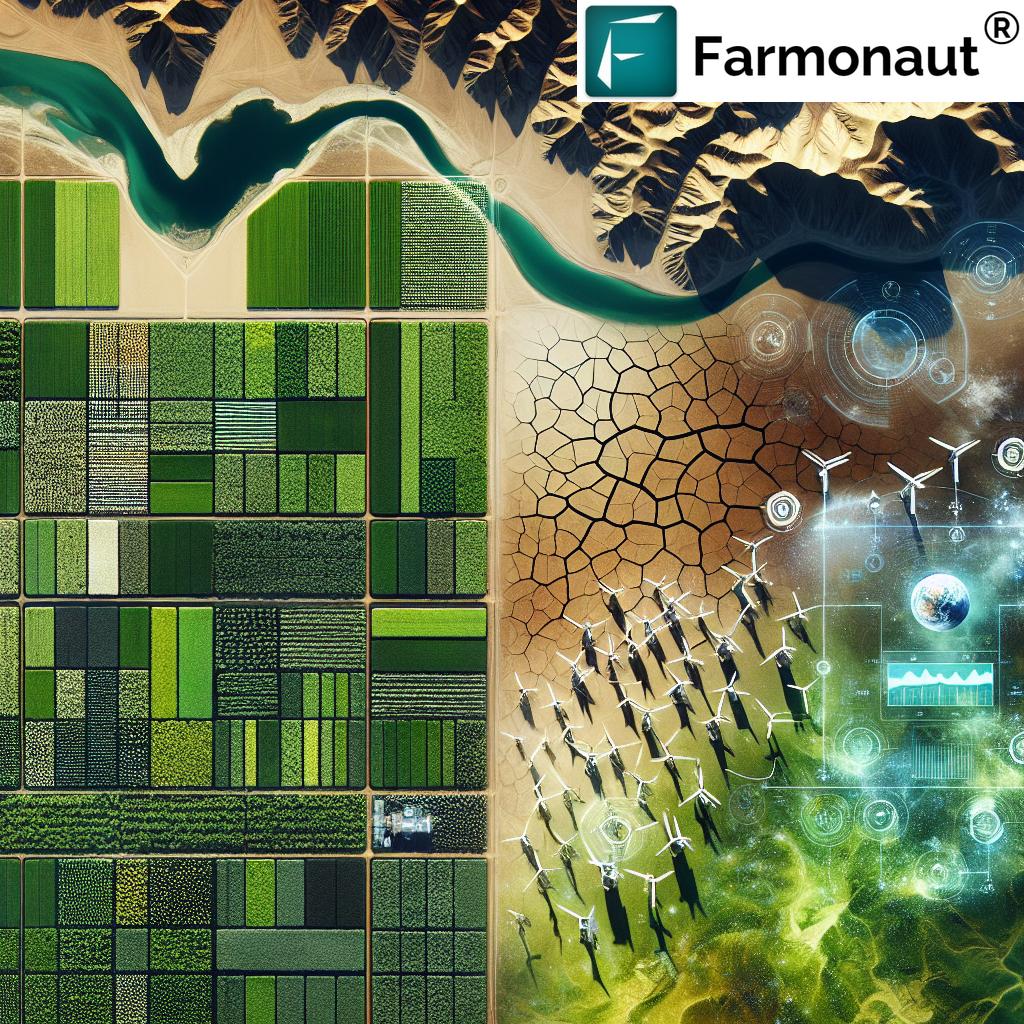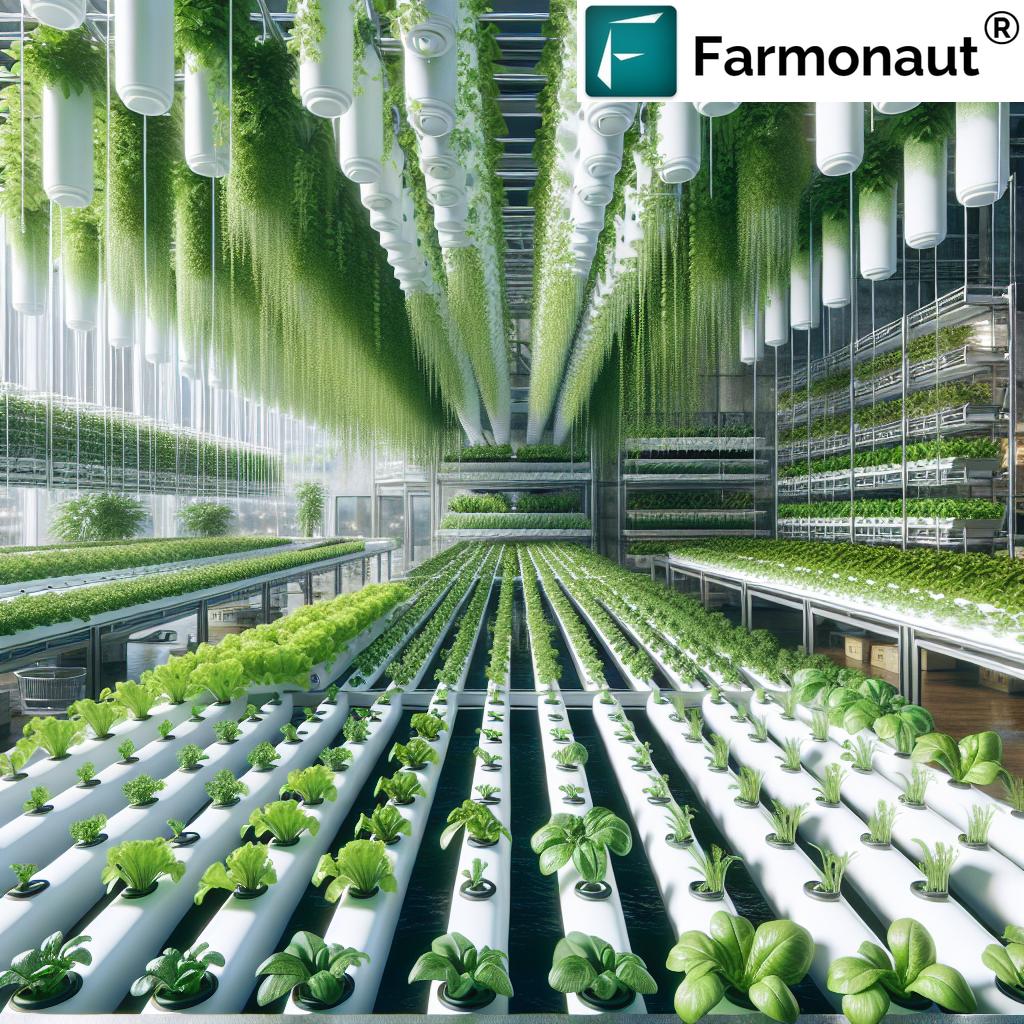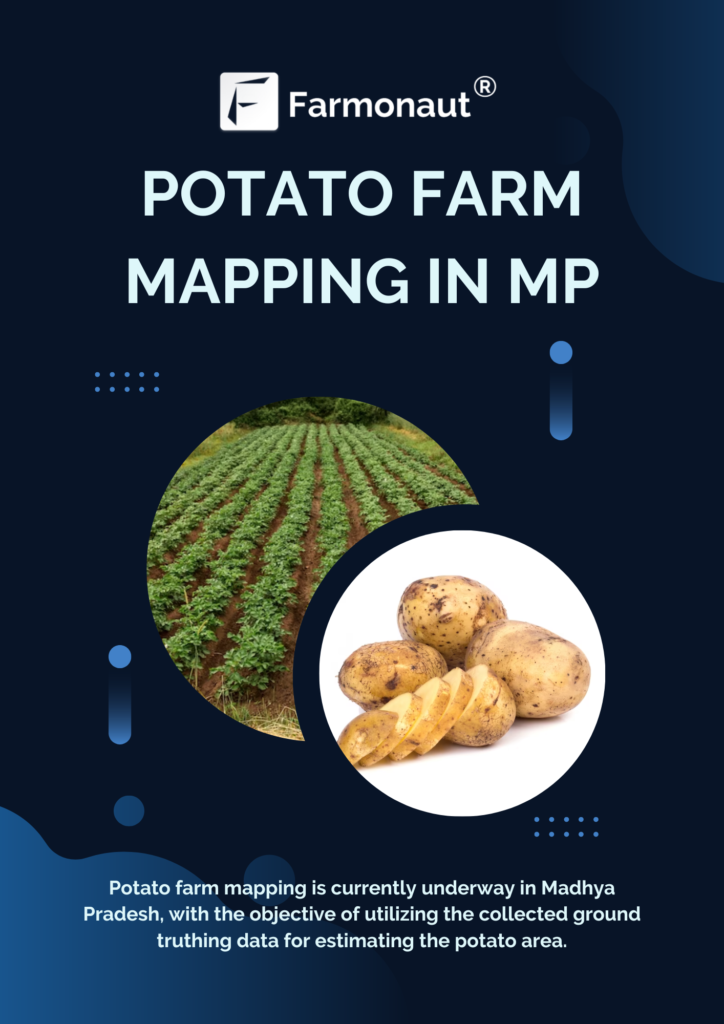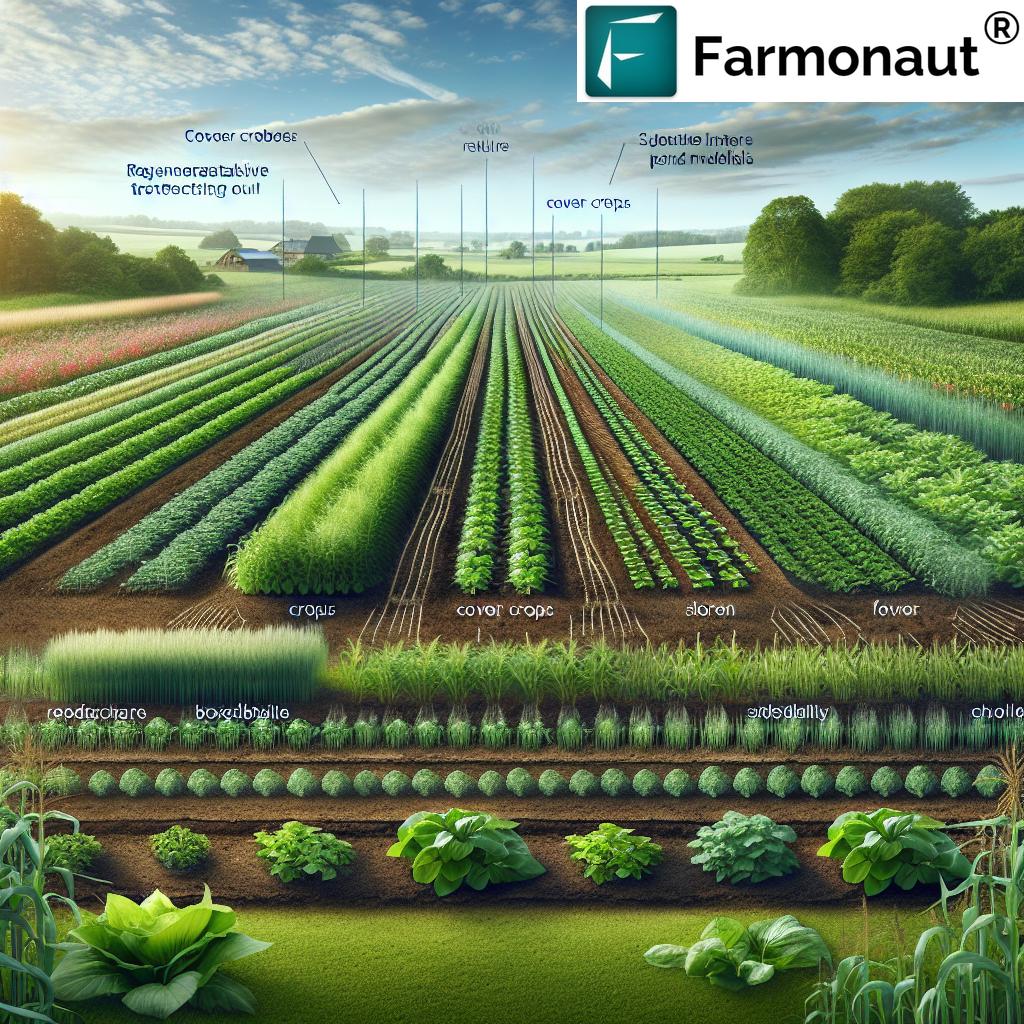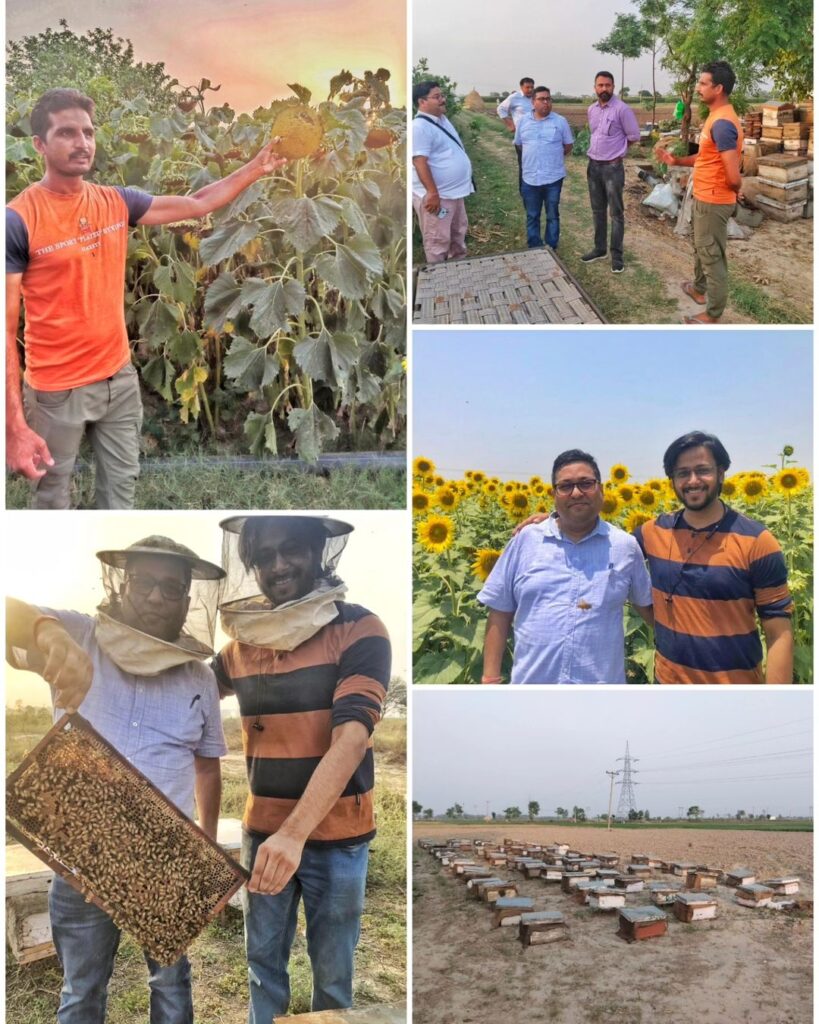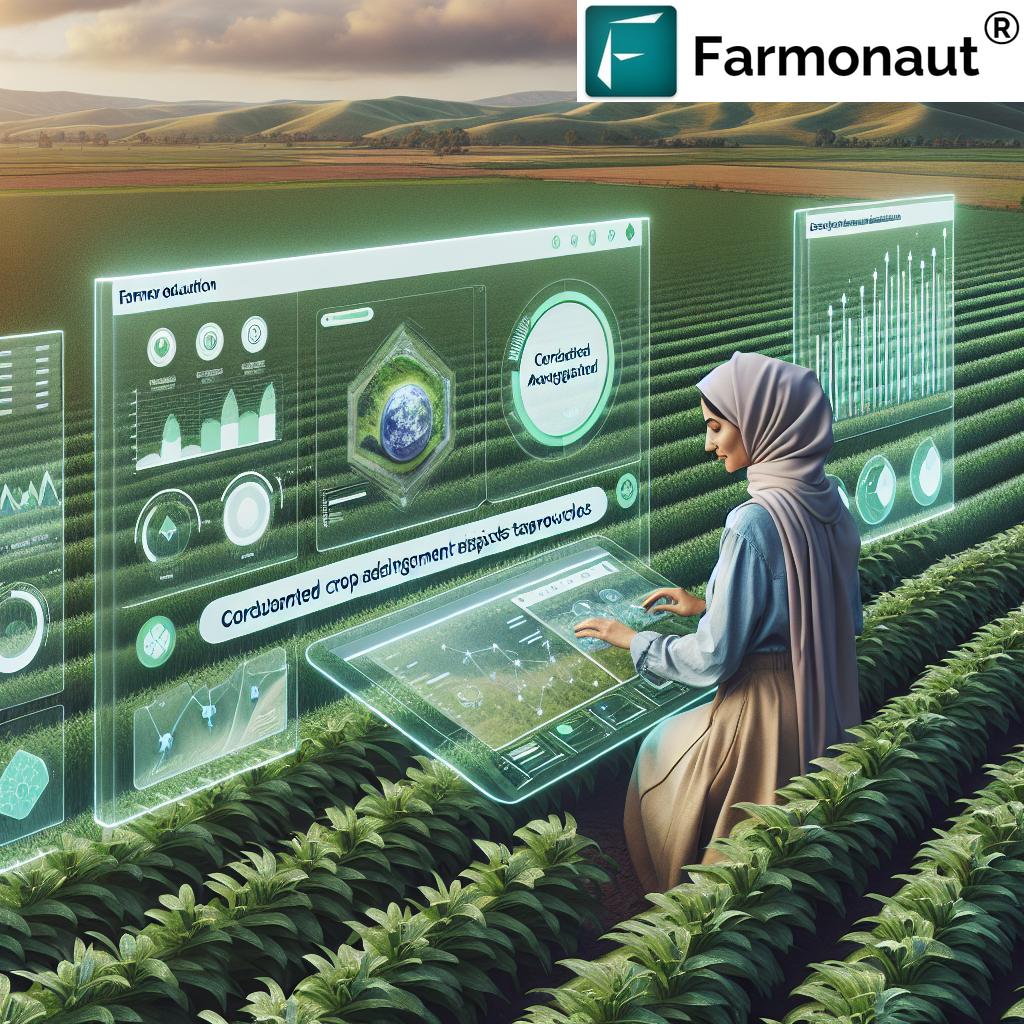Revolutionizing Australian Wine Exports: How GIS and Sustainable Practices Are Shaping the Future of Viticulture
“Australian wine exports reached $2.89 billion in 2020, with GIS technology playing a crucial role in vineyard management.”
Welcome to our comprehensive guide on how Geographic Information Systems (GIS) and sustainable practices are transforming the Australian wine export market. As pioneers in agricultural technology, we at Farmonaut are excited to explore the innovative ways in which the wine industry is evolving to meet global challenges and consumer demands.
The Revolution in Australian Viticulture
The Australian wine industry has long been known for its quality and innovation. Today, we’re witnessing a new era where technology and sustainability are at the forefront of vineyard management and wine production. This revolution is not just changing how we grow grapes and make wine, but also how we market and export our products to the world.

GIS in Viticulture: A Game-Changer for Australian Winegrowers
Geographic Information Systems (GIS) have become indispensable tools in modern viticulture. These sophisticated systems allow winegrowers to:
- Map and analyze vineyard topography
- Monitor soil conditions and moisture levels
- Track grape ripeness and predict optimal harvest times
- Manage irrigation systems with precision
- Identify and respond to pest and disease outbreaks quickly
By leveraging GIS technology, Australian winegrowers can make data-driven decisions that improve wine quality, increase yields, and reduce resource waste. This level of precision in vineyard management is setting new standards in the industry and contributing to the stellar reputation of Australian wines in the global market.
Sustainable Winegrowing: The Future of Australian Viticulture
Sustainability is no longer just a buzzword in the wine industry; it’s a necessity. Australian winegrowers are leading the charge in implementing sustainable practices that not only benefit the environment but also enhance the quality of their wines. Some key sustainable winegrowing practices include:
- Water conservation through efficient irrigation systems
- Organic and biodynamic farming methods
- Use of renewable energy in winery operations
- Integrated pest management to reduce chemical use
- Carbon footprint reduction initiatives
These practices not only contribute to environmental conservation but also resonate with eco-conscious consumers in key export markets like the United States, Europe, and increasingly, China.
Wine Labelling Guidelines and Export Regulations
Navigating the complex world of wine labelling and export regulations is crucial for success in international markets. Australian wine exporters must adhere to strict guidelines that ensure transparency and compliance. Key aspects include:
- Accurate varietal and regional labelling
- Alcohol content declaration
- Health and allergen warnings
- Country of origin statements
- Compliance with destination country regulations
Understanding and implementing these guidelines is essential for Australian wine exporters to maintain their competitive edge in the global market. Our expertise at Farmonaut can assist in ensuring compliance through our advanced tracking and documentation systems.
Global Wine Variety Trends: What’s Hot in the Market
Staying ahead of global wine variety trends is crucial for Australian exporters. Current market research indicates growing demand for:
- Light and refreshing white wines (e.g., Sauvignon Blanc, Pinot Grigio)
- Bold and full-bodied red wines (e.g., Shiraz, Cabernet Sauvignon)
- Organic and natural wines
- Low-alcohol and alcohol-free options
- Unique Australian varieties like Grenache and Tempranillo
By aligning production with these trends, Australian wineries can tap into new markets and strengthen their position in existing ones.
“Climate change has shifted optimal wine-growing regions in Australia by up to 100 km since the 1960s.”
Climate Change and Its Impact on Australian Viticulture
Climate change poses significant challenges to the wine industry worldwide, and Australia is no exception. Rising temperatures, changing rainfall patterns, and extreme weather events are forcing winegrowers to adapt their practices. Some key impacts and adaptations include:
- Shifting growing regions to cooler climates
- Experimenting with heat-resistant grape varieties
- Implementing water-saving technologies
- Adjusting harvest times to maintain optimal grape ripeness
- Investing in research on climate-resilient viticulture practices
At Farmonaut, we’re committed to helping winegrowers navigate these challenges through our advanced monitoring and forecasting tools.

Effective Wine Marketing Techniques for Global Markets
In today’s competitive global wine market, effective marketing is as crucial as producing quality wine. Australian exporters are employing various strategies to stand out:
- Storytelling that highlights Australia’s unique terroir and winemaking heritage
- Digital marketing campaigns tailored to specific export markets
- Collaboration with influencers and sommeliers to build brand awareness
- Virtual tastings and online experiences to engage international consumers
- Emphasizing sustainability and eco-friendly practices in marketing materials
These marketing techniques help Australian wines capture the attention of consumers in key markets like China, the United States, and Europe.
Export Strategies for Key Markets: China, US, and Europe
Developing targeted export strategies for key markets is essential for success. Here’s a brief overview of approaches for major markets:
China:
- Focus on red wines, particularly Shiraz and Cabernet Sauvignon
- Emphasize the premium quality and prestige of Australian wines
- Engage with e-commerce platforms and social media influencers
United States:
- Highlight the diversity of Australian wine regions and styles
- Tap into the growing market for organic and sustainable wines
- Utilize direct-to-consumer channels and wine clubs
Europe:
- Focus on unique Australian varieties and blends
- Emphasize sustainability and organic production methods
- Collaborate with local distributors and sommeliers
Organic Wine Production: A Growing Trend
Organic wine production is gaining momentum in Australia, driven by consumer demand for healthier, more environmentally friendly options. Key aspects of organic wine production include:
- No use of synthetic pesticides or fertilizers
- Natural pest control methods
- Minimal intervention in the winemaking process
- Strict certification processes
- Focus on expressing the natural characteristics of the grapes and terroir
Australian organic wines are finding increasing success in export markets, particularly in Europe and North America.
Pest Management in Vineyards: Balancing Ecology and Efficiency
Effective pest management is crucial for maintaining vineyard health and wine quality. Modern approaches focus on integrated pest management (IPM) strategies that balance ecological considerations with efficiency:
- Using beneficial insects to control harmful pests
- Implementing pheromone traps for monitoring and disrupting pest mating cycles
- Utilizing cover crops to promote biodiversity and natural pest control
- Applying targeted, minimal-impact treatments when necessary
- Leveraging GIS and satellite technology for early detection and precise treatment
These strategies help reduce chemical use while maintaining vineyard health, aligning with the industry’s move towards sustainability.
Digital Tools Transforming the Wine Sector
The wine industry is embracing digital transformation, with a range of tools revolutionizing everything from vineyard management to marketing:
- Satellite imaging for precise crop monitoring
- AI-powered predictive analytics for harvest timing and yield estimation
- Blockchain technology for supply chain transparency and authenticity verification
- Virtual and augmented reality experiences for remote wine tastings
- E-commerce platforms tailored for wine sales and distribution
At Farmonaut, we’re proud to be at the forefront of this digital revolution, offering cutting-edge solutions for improved vineyard monitoring and management.
Wine Tourism: A Valuable Revenue Stream
Wine tourism is becoming an increasingly important part of the Australian wine industry, offering a valuable additional revenue stream and brand-building opportunity. Key aspects include:
- Cellar door experiences and tastings
- Vineyard tours showcasing sustainable practices
- Food and wine pairing events
- Accommodation offerings in picturesque vineyard settings
- Festival and event hosting to attract visitors year-round
By enhancing their wine tourism offerings, Australian wineries can create memorable experiences that translate into increased brand loyalty and export sales.
Navigating Export Documentation and Regulations
Successful wine exporting requires a thorough understanding of documentation and regulatory requirements. Key considerations include:
- Export licenses and permits
- Customs documentation and tariffs
- Label compliance for different markets
- Quality and safety certifications
- Shipping and logistics planning
Staying up-to-date with these requirements is crucial for smooth export operations. Our digital tools at Farmonaut can assist in managing and tracking this complex documentation process.
The Role of Research and Innovation in Australian Viticulture
Research and innovation play a vital role in keeping the Australian wine industry competitive on the global stage. Key areas of focus include:
- Developing drought-resistant grape varieties
- Improving water use efficiency in vineyards
- Exploring new winemaking techniques for unique flavor profiles
- Investigating the impact of climate change on wine quality
- Enhancing disease resistance in grapevines
These research efforts ensure that Australian wines continue to evolve and improve, maintaining their position in the competitive global market.
Explore Farmonaut’s API for advanced agricultural insights
Comparative Analysis of Vineyard Management Techniques
| Management Aspect | Traditional Method | Farmonaut-Enhanced Method | Estimated Improvement |
|---|---|---|---|
| Irrigation | Manual scheduling based on visual inspection | Satellite-based soil moisture monitoring and AI-driven scheduling | 20-30% reduction in water usage |
| Pest Control | Regular scheduled spraying | Early detection using satellite imagery and targeted treatment | 85% accuracy in early pest detection |
| Harvest Timing | Manual sampling and testing | Predictive analytics based on satellite data and historical patterns | 7-10 days earlier identification of optimal harvest windows |
| Yield Prediction | Historical data and manual estimation | AI-powered analysis of satellite imagery and environmental data | 90% accuracy in yield predictions |
| Climate Adaptation | Reactive measures based on current conditions | Proactive strategies using long-term climate trend analysis | 15-20% improvement in climate resilience |
Future Outlook: Trends Shaping the Australian Wine Industry
As we look to the future, several trends are likely to shape the Australian wine industry:
- Increased focus on sustainable and organic wine production
- Growing demand for unique, lesser-known Australian varieties
- Expansion of wine tourism offerings
- Further integration of technology in all aspects of wine production and marketing
- Adaptation to changing climate conditions through research and innovation
By staying ahead of these trends, Australian wine exporters can maintain their competitive edge in the global market.
Conclusion: Embracing Innovation for a Sustainable Future
The Australian wine industry stands at the forefront of innovation, blending traditional winemaking expertise with cutting-edge technology and sustainable practices. By embracing GIS, implementing sustainable winegrowing techniques, and leveraging digital tools, Australian wine exporters are well-positioned to meet the challenges of a changing climate and evolving consumer preferences.
At Farmonaut, we’re committed to supporting this journey by providing advanced agricultural technology solutions that enable precise vineyard management, enhance sustainability, and drive innovation in the wine industry. Together, we can ensure that Australian wines continue to captivate and delight consumers around the world for generations to come.
Access Farmonaut’s API Developer Docs for in-depth integration guides
FAQ Section
Q: How is GIS technology improving vineyard management?
A: GIS technology enhances vineyard management by providing precise data on soil conditions, moisture levels, and crop health, allowing for targeted interventions and optimized resource use.
Q: What are some key sustainable practices in Australian winegrowing?
A: Key sustainable practices include water conservation, organic farming methods, renewable energy use, integrated pest management, and carbon footprint reduction initiatives.
Q: How is climate change affecting Australian wine production?
A: Climate change is shifting optimal growing regions, necessitating adaptations in grape varieties, water management, and harvest timing to maintain wine quality and yield.
Q: What are the main challenges in exporting Australian wine?
A: Main challenges include navigating complex regulations, adapting to diverse market preferences, managing logistics, and competing in a crowded global marketplace.
Q: How can digital tools benefit wine exporters?
A: Digital tools can improve vineyard management, streamline supply chains, enhance marketing efforts, and provide valuable data insights for strategic decision-making.







